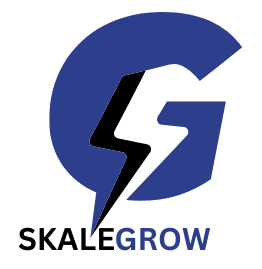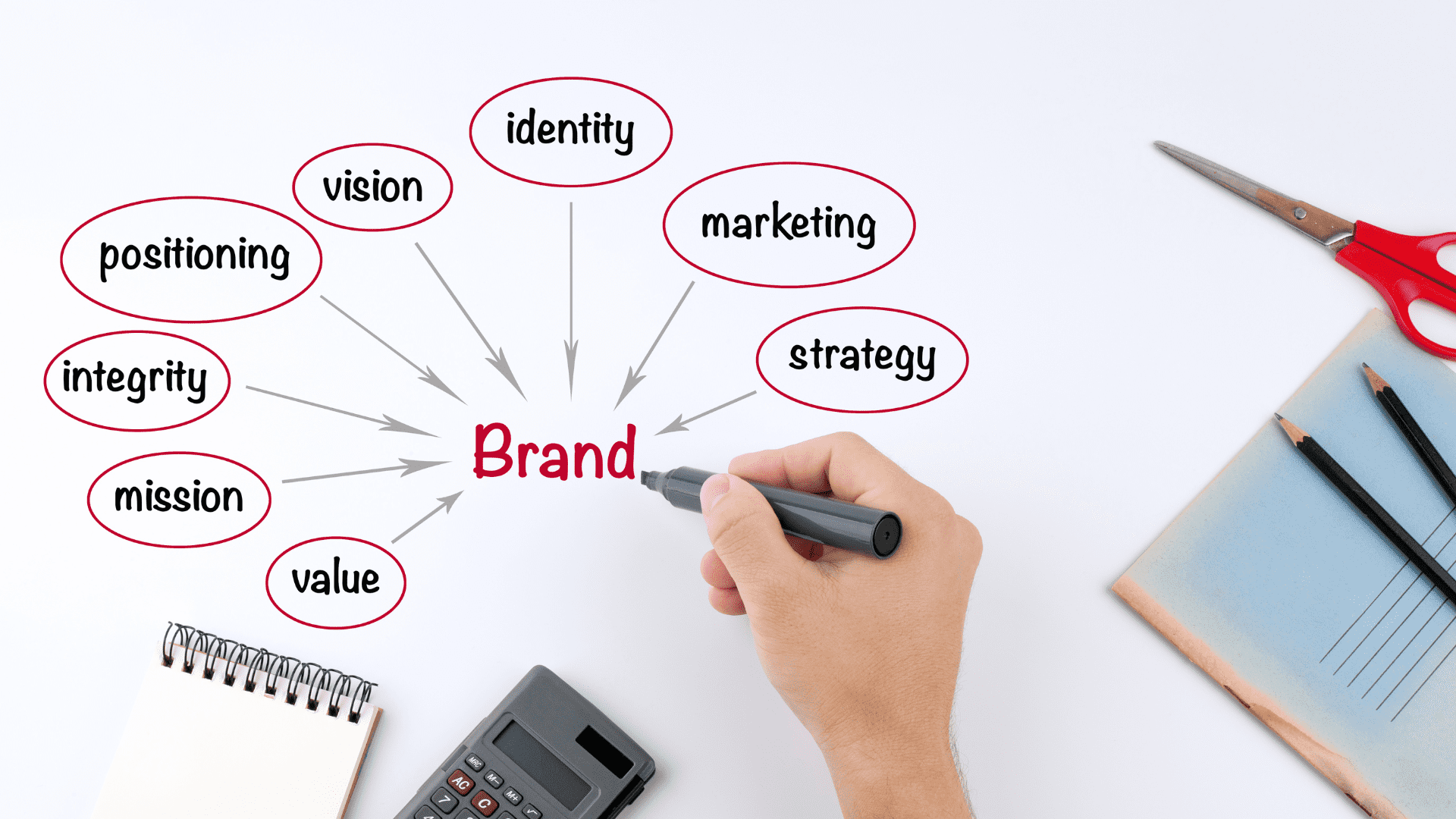This article was originally published in the Elevate Your Marketing newsletter and has been repurposed and republished here with the author’s permission. Here is the link to the original article.
While the importance of a brand is well understood in the B2C space, not many business owners realize its value in the B2B world. But to build a sustainable business that wins in the long run, developing your company into a recognizable brand is a must for B2B organizations.
The importance of brand equity
In any niche, there is an equally good competitor out there who can offer similar products and services to yours. So how do you differentiate?
One of the ways to do that is branding – it helps to establish trust and credibility. The higher your brand equity, the better your chances of winning a deal against your competition.
Understanding the stages of a brand journey helps you devise your business and marketing plan to progress from one stage to the other. This requires not just number crunching and logical thinking, but your creative brain to work to understand the ‘emotional’ element behind branding.
Keeping these in mind, let us look at how branding plays its part in the B2B world through the 6 stages of the brand development journey.
The 6 stages of a brand journey
As you might already know, the 6 stages of the brand development journey are:
- Formulating a brand identity.
- Increasing brand awareness.
- Building brand credibility.
- Enabling brand engagement.
- Ensuring brand receptivity.
- Achieving brand resonance.
Let us look at each of them in detail.
1. Formulating a brand identity
Brand identity refers to the subtle perception your target audience forms when they come across your company or product. In essence, it is brand identity that creates the first impression about your brand. So make sure your business’s ‘face’ is ‘well-groomed’ wherever your prospects see it.
Some of the questions you could ask yourself to formulate a brand identity are:
- What is the ‘why’ (purpose) of your business? Why do you exist?
- Whose life do you aim to change with your solutions?
- How do you plan to achieve the ‘change’?
- What is the expected outcome for your customers by using your products or services?
By finding answers to these questions, you should be able to design a brand identity that ‘defines’ your business.
2. Increasing brand awareness
The brand awareness stage is characterized by your prospects having a recall and recognition of your company without having to force it. While recognition is about the ability of a prospect to identify your business while he/she sees any content about it, recall is about him/her remembering it without a trigger in a specific context.
Following are a few reasons why brand awareness is important for B2B businesses:
- Most of the research in the B2B buying process happens even before the prospect becomes a lead. Hence, a top-of-the-mind recall of your brand helps to get your company on the prospect’s radar or evaluation list.
- Search engines tend to rank companies with a good brand above their counterparts.
- Having a good brand recall and recognition will help your SDRs (Sales Development Representatives) to open doors faster during their outreach.
Related: 10 metrics to measure B2B brand awareness and reach
3. Building brand credibility
Brand credibility is about evoking a positive feeling about your business whenever people hear about it. This requires your business to be more than ‘present’ in the channels your prospects actively hang out.
Brand credibility – in today’s digital world – is determined more by online reviews, customer testimonials, social media sentiments, etc. than any physical evidence. So your organization needs to have a ‘positive presence’ across all these online channels.
Broadly speaking, given below are some of the ways in which you can do this:
- Have a customer-centric approach in place to create not just happy but loyal customers. This can help a lot in ‘word of mouth marketing’.
- Actively participate in relevant communities with a mentality to help your target audience. This can be done across social media groups, closed communities (on platforms like Slack and Discord), online forums (such as Quora), etc.
- Make sure to respond to negative comments. How you take into consideration negative feedback and how you act upon it is critical to building a credible brand.
- Invest in employer branding. Talk about why your company is a great place to work. And practice what you preach.
4. Enabling brand engagement
Brand engagement is all about your business’s interaction with prospects and customers. You need to have an omnichannel approach to this to enable brand engagement with your customers where they want and when they want. From email to videos to social media to events and conferences, the touchpoints are plenty.
This stage can be read along with the previous stage. Here, things like the following need to be managed with utmost care:
- Online reputation management.
- Using a consistent brand voice across all channels.
- Predefined SOPs (Standard Operating Procedures) and SLAs (Service Level Agreements) for interacting with customers and prospects.
- The right training mechanism to train customer and external-facing employees (such as social media managers, SDRs, account executives, community managers, etc) with the necessary skills.
It is when you implement brand engagement the right way that you will be able to build brand credibility that lasts for the long term.
5. Ensuring brand receptivity
Your business attains brand receptivity when you become the most popular among the crowd. This is the stage where your customers think about referring you to a peer as they enjoy and feel your products and services. At this stage, you have:
- Attained a certain level of self-sustenance when it comes to customer success.
- Created a ‘wow’ factor among a vast majority of your customers so that they will happily recommend you to their peers.
- Improved the chances of retention with a high barrier to entry for your competition to replace you among your customers.
- Sown the seeds for brand advocacy.
Reaching this stage is game-changing for any B2B business, especially those that have to renew contracts every year or within a shorter period (examples of such businesses include B2B SaaS companies, media websites, lead generation service providers, etc.). This is because retention becomes less of a challenge and the company can focus more on new business generation.
6. Achieving brand resonance
This is the most mature stage of a brand journey where your customers become your loyal fans. They start to identify themselves with your company’s brand. In B2B, this manifests in the following ways:
- Partnerships where a company is proud to be your partner.
- Mergers and acquisitions where both parties are happy to merge with each other’s ecosystem.
- Brand collaborations in the form of co-hosted webinars, panel discussions, event collaborations, joint press releases, etc.
- Offering recommendations using testimonials, case studies, customer story series, word-of-mouth marketing, etc.
It is important to note that there is always a thin line between the 6 stages of a brand’s journey. And often, one leads to the other (or one complements the other). So instead of looking at each of these stages in isolation, try to understand where your brand fits in as a whole, and what you need to do as a business to make the most of your branding efforts.
That wraps up how you can look at the 6 stages of a brand journey for B2B businesses. I could cover only so much in an article.
Skalegrow – B2B marketing agency
With marketing getting tougher and tougher, every wrong foot you make might hamper your growth. What you need is the right guidance and a helping hand. This is where Skalegrow can make a sea of difference.
Skalegrow helps IT, tech, SaaS, and embedded systems companies leverage new-age marketing tactics to grow their business. Check out the below intro video to learn more about what Skalegrow brings to the table:
Our services include content marketing, SEO, graphic design, video marketing, LinkedIn marketing, email marketing, performance marketing, and website management. Write to us at info@skalegrow.com, or visit our services page for more details.
About the author

Naseef KPO is the Founder and CEO of Skalegrow. He comes with rich experience across multiple areas of B2B marketing including content marketing, demand generation, SEO, account-based marketing, marketing analytics, revenue attribution, marketing technology, etc. He writes thought-provoking and relevant articles on The Skalegrow Blog and his weekly LinkedIn newsletter Elevate Your Marketing.
Prior to starting Skalegrow, Naseef led large marketing teams in multi-million dollar B2B organizations where he made significant contributions to the topline growth of the business. He has also appeared on numerous podcasts where he shared his thoughts on trending marketing topics such as the application of AI in marketing, startup marketing, ABM, and B2B content marketing, just to name a few. Being the founder of Skalegrow, he is currently focusing on helping its clients stay ahead of their competition by using innovative yet practical marketing tactics.
You can connect with Naseef KPO on LinkedIn.


